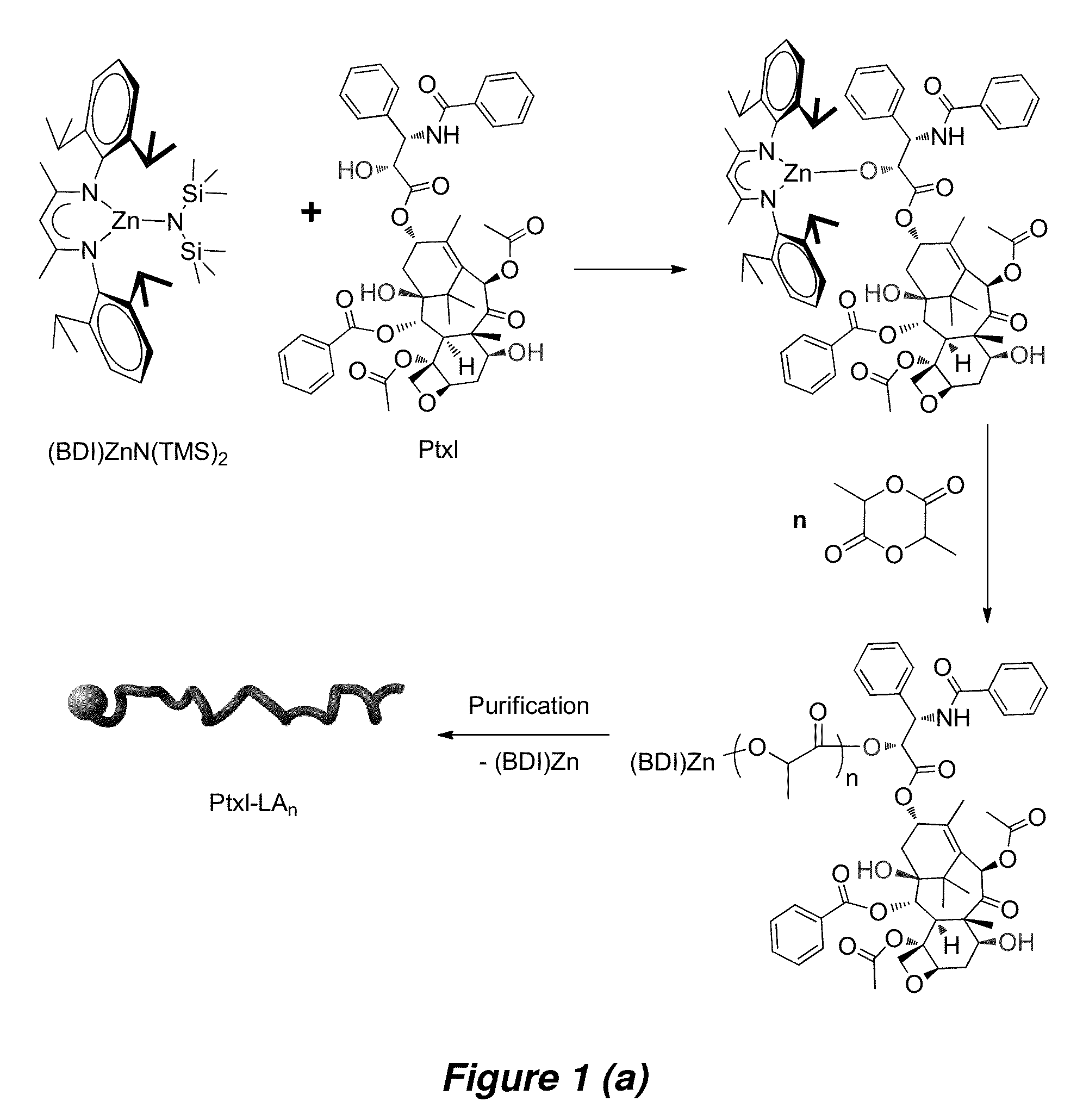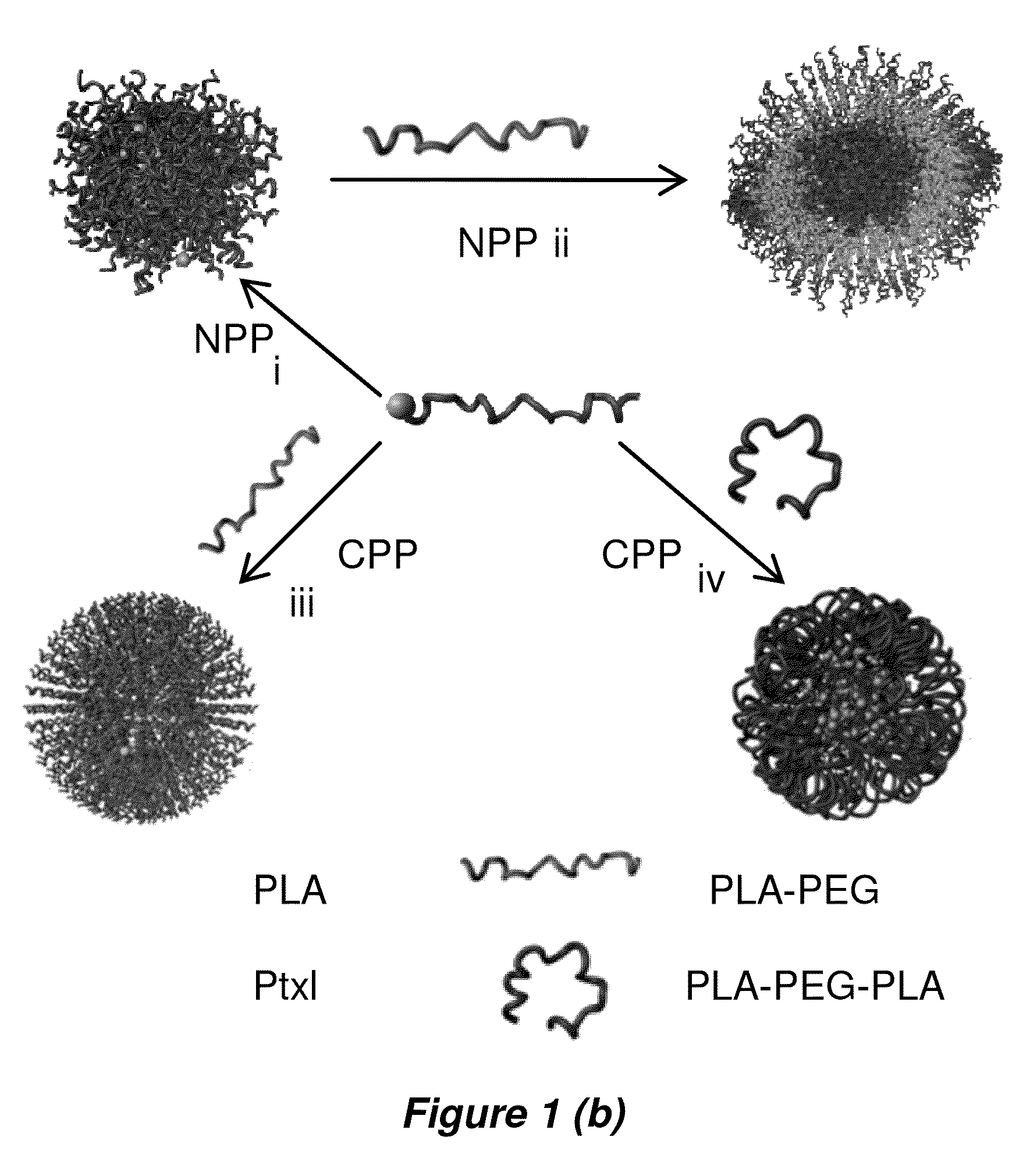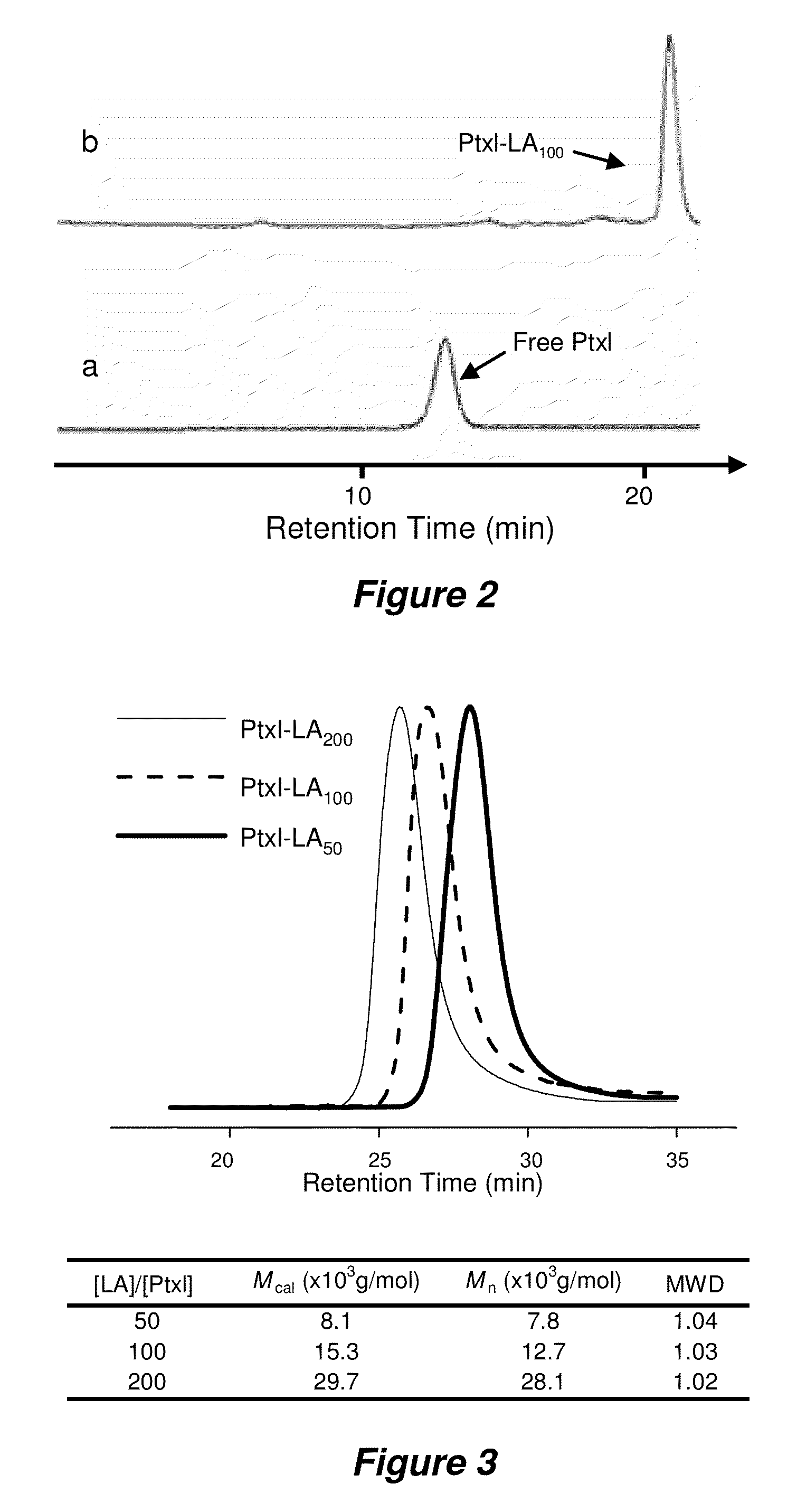Nanoconjugates and nanoconjugate formulations
a technology of nanoconjugates and nanoconjugates, applied in the direction of drug compositions, peptide/protein ingredients, microcapsules, etc., can solve the problems of destroying the utility of these compositions, and achieve the effect of reducing or eliminating the aggregation of nanoparticles
- Summary
- Abstract
- Description
- Claims
- Application Information
AI Technical Summary
Benefits of technology
Problems solved by technology
Method used
Image
Examples
specific embodiments
[0120]Described herein are novel nanoconjugates (NCs) that can be used as drug delivery vehicles. For example, a new, drug-initiated LA polymerization process was developed to allow for controlled drug incorporation to a terminal of PLA. In one embodiment, Ptxl can be conjugated to PLA regioselectively via its 2′—OH group (FIG. 1a). The resulting Ptxl-PLA conjugates have well controlled MWs and narrow polydispersities.
[0121]The capability of making Ptxl-PLA with controlled properties forms the foundation for further investigation of formulation parameters that are central to the clinical translation of polymeric NPs. It was demonstrated that Ptxl-PLA can be co-precipitated with PLA-PEG-PLA, an amphiphilic triblock copolymer, directly in PBS solution to form NCs that can remain non-aggregated in aqueous solutions, such as a salt solution. It was also discovered that albumin is an excellent lyoprotectant, which successfully provided a solid formulation of NCs that can be reconstituted...
example 1
Aptamer-coated Nanoconjugates
[0179]Materials, Methods, and General Experimental Details. D,L-Lactide (LA) was purchased from TCI America (Portland, OR), recrystallized three times in toluene and stored at −30° C. in a glove box prior to use. β-Diimine (BDI) ligand and the corresponding metal complex (BDI)ZnN(TMS)2 were prepared by following the published procedures (J. Am. Chem. Soc. 2001; 123:3229-3238) and stored at −30° C. in a glove box. Anhydrous solvents were purified by passing solvents through alumina columns and kept anhydrous by storing with molecular sieves. Paclitaxel (Ptxl) was purchased from LC Laboratories (Woburn, Mass.) and stored at −30° C. in a glove box prior to use. Other chemicals were typically purchased from Sigma-Aldrich (St Louis, Mo.) and used as received.
[0180]The molecular weights (MWs) of PLA were determined on a gel permeation chromatography (GPC) equipped with an isocratic pump (Model 1100, Agilent Technology, Santa Clara, Calif.), a DAWN HELEOS 18-an...
example 2
Albumin Lyoprotection
[0228]As described above in Example 1, albumin can be used as a lyoprotectant to eliminate aggregation of lyophilized nanoparticles, such as various polymer-based nanoparticles, including drug-polymer nanoconjugates. The albumin lyoprotectant methods described herein can be extended to a variety of colloidal systems, in addition to nanoconjugate compositions. For many polymeric sub-micrometer particles, instability during long term storage can limit their otherwise broad clinical applications. To solve instability problems, the particles can be co-formulated with albumin, for example, as described in Example 1. The albumin can be a mammal serum albumin, such as bovine serum albumin or human serum albumin.
[0229]Examples of polymer-based particles that can be lyoprotected using albumin to provide non-aggregating solid-form preparations include biodegradable polymers such as polylactide, polyglycolide, and their copolymer poly(lactide-co-glycolide); polycaprolacton...
PUM
| Property | Measurement | Unit |
|---|---|---|
| diameter | aaaaa | aaaaa |
| diameter | aaaaa | aaaaa |
| molecular weight distribution | aaaaa | aaaaa |
Abstract
Description
Claims
Application Information
 Login to View More
Login to View More - R&D
- Intellectual Property
- Life Sciences
- Materials
- Tech Scout
- Unparalleled Data Quality
- Higher Quality Content
- 60% Fewer Hallucinations
Browse by: Latest US Patents, China's latest patents, Technical Efficacy Thesaurus, Application Domain, Technology Topic, Popular Technical Reports.
© 2025 PatSnap. All rights reserved.Legal|Privacy policy|Modern Slavery Act Transparency Statement|Sitemap|About US| Contact US: help@patsnap.com



